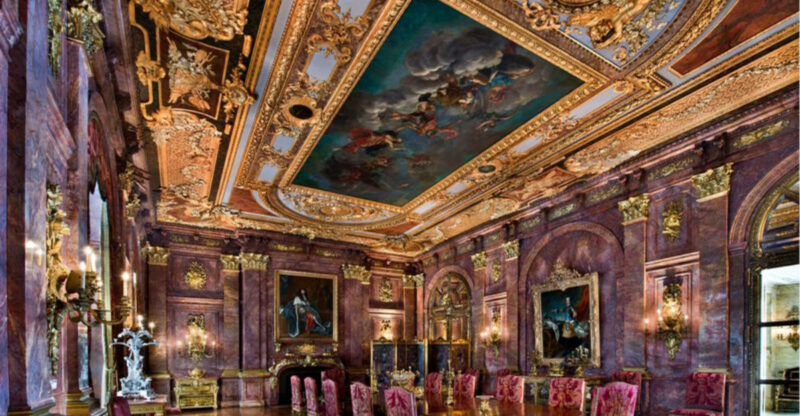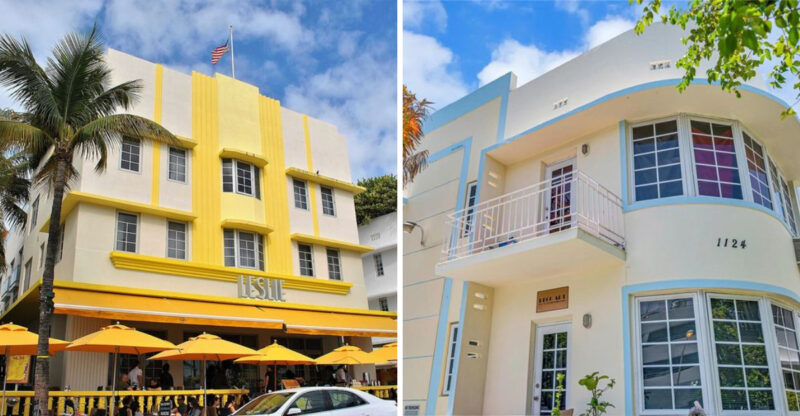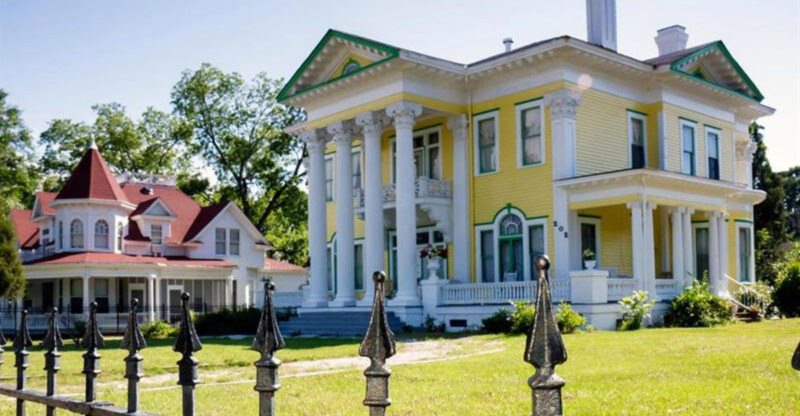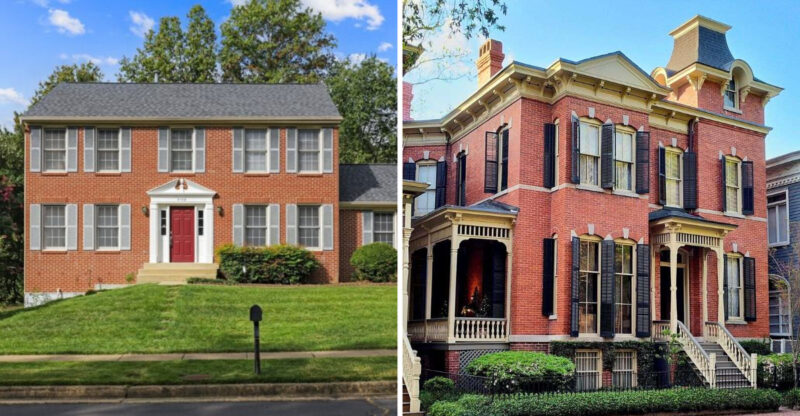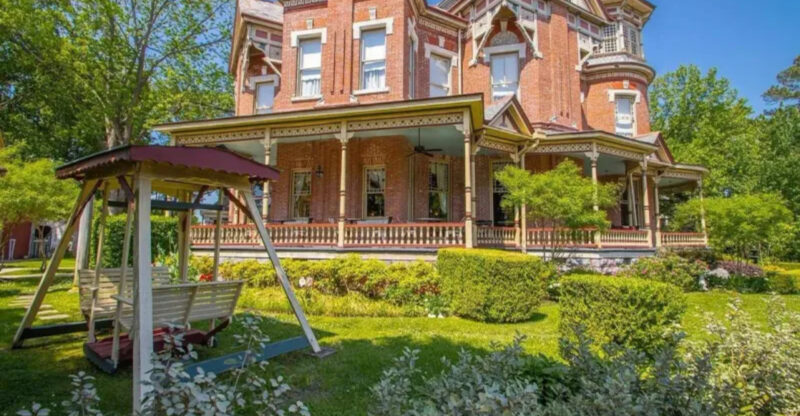Inside 25 Luxurious Homes Of The Richest Gilded Age Families In USA
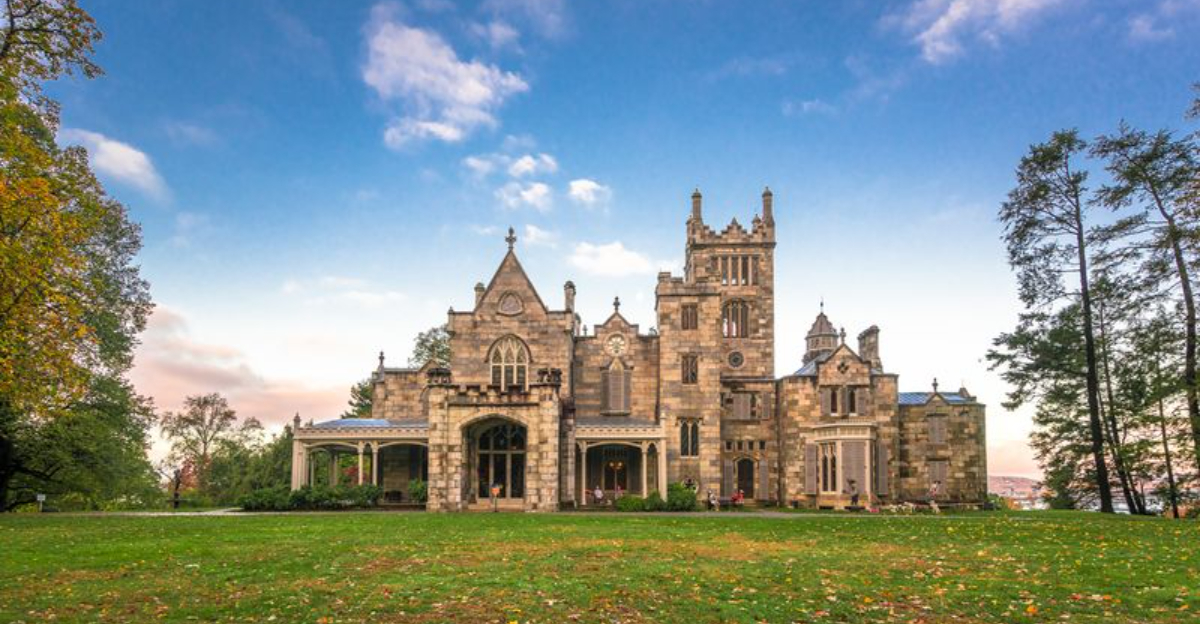
The Gilded Age was a time of enormous wealth and extravagance in America. From the 1870s to early 1900s, industrial tycoons built magnificent mansions that showcased their incredible fortunes.
These palatial homes featured imported materials, priceless art, and cutting-edge luxuries that ordinary Americans could hardly imagine.
1. The Breakers: Vanderbilt’s Newport Palace

Overlooking the Atlantic Ocean stands a summer ‘cottage’ that defies imagination. The Vanderbilt family spared no expense on this 70-room Italian Renaissance palace.
The Breakers featured gold-leaf ceilings, platinum wall panels, and mosaics crafted by artisans shipped in from Europe. Even the servants’ quarters were more luxurious than most middle-class homes of the era.
2. Biltmore Estate: America’s Largest Home
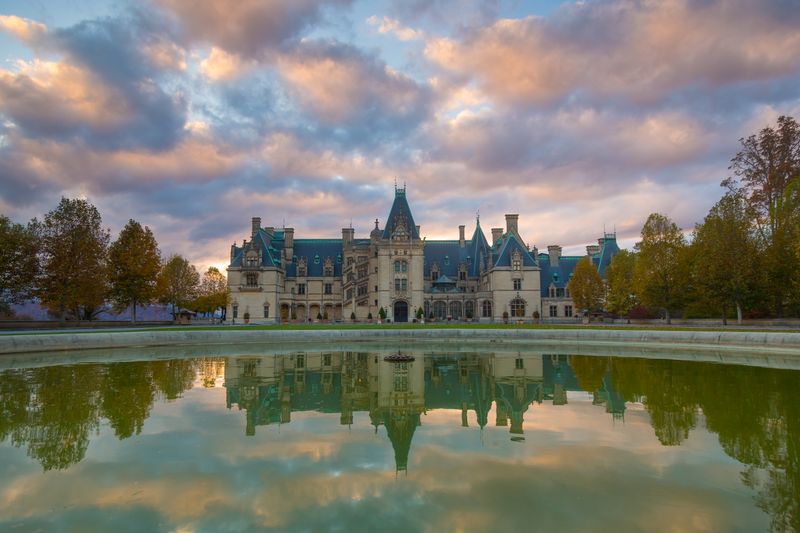
Nestled in the Blue Ridge Mountains lies a French château of staggering proportions. George Vanderbilt’s countryside retreat boasted 250 rooms spread across four acres of floor space.
Biltmore’s amenities included an indoor swimming pool, bowling alley, and 65 fireplaces. The estate originally encompassed 125,000 acres of forests, farms, and gardens designed by Frederick Law Olmsted, the creator of Central Park.
3. Marble House: Alva Vanderbilt’s Marble Marvel
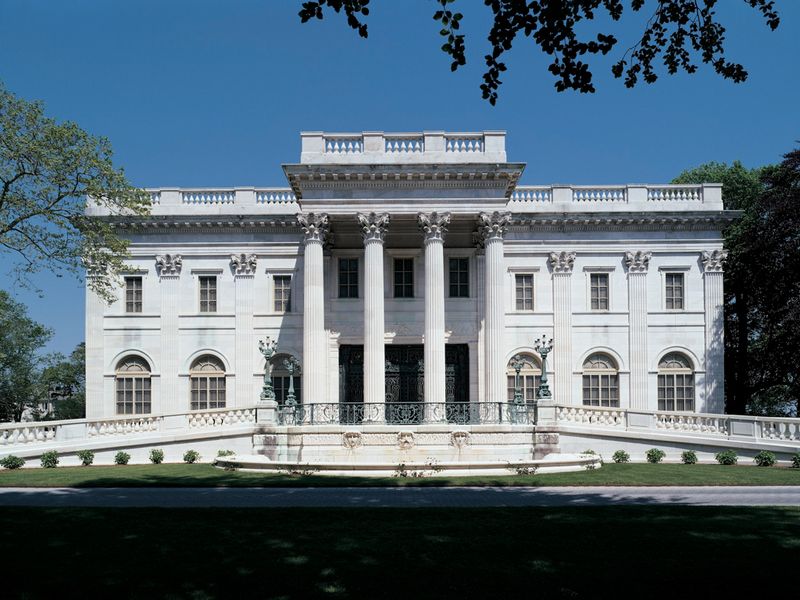
Gleaming white against Newport’s coastline, this summer home redefined opulence in America. Built as a birthday present for Alva Vanderbilt, it contained over 500,000 cubic feet of marble.
Marble House cost $11 million in 1892 (equivalent to over $300 million today). The Gold Room featured wall panels covered in gold leaf, while the Grand Salon was modeled after the Hall of Mirrors at Versailles.
4. The Elms: Coal Baron’s Classical Creation
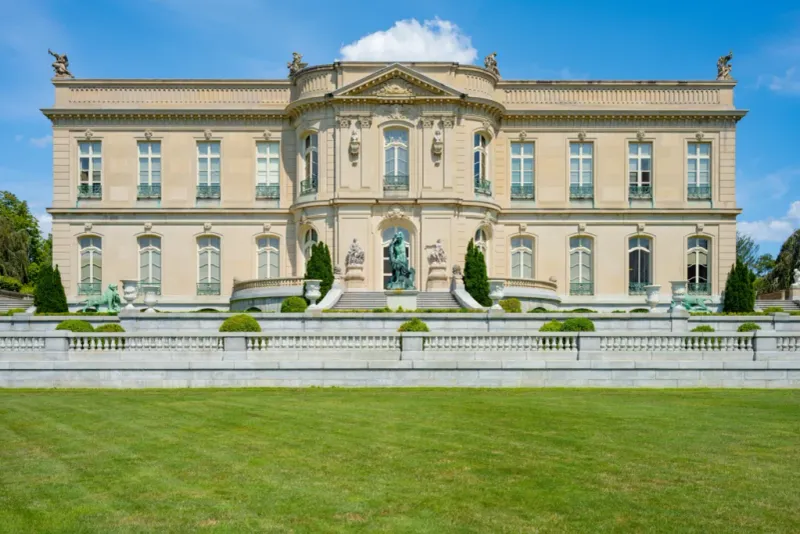
Rising majestically behind enormous gates, this Newport showplace exemplified new money on display. Coal magnate Edward Berwind commissioned architects to create a French-inspired château with technological marvels hidden within.
The Elms featured one of America’s first electric ice makers and a complex coal-delivery system that kept servants invisible. Its terraced gardens, modeled after 18th-century French designs, required a staff of 40 gardeners to maintain.
5. Rosecliff: Silver Heiress’s Entertainment Palace

Fashioned after the Grand Trianon at Versailles, this gleaming white structure hosted legendary parties. Theresa Fair Oelrichs, heir to the Comstock Lode silver fortune, built her dream home specifically for entertaining society’s elite.
Rosecliff’s ballroom was the largest in Newport at 40 by 80 feet. The mansion became famous for extravagant themed galas, including the “White Party” where guests arrived in white costumes to match the house itself.
6. Rough Point: Doris Duke’s Seaside Retreat

Commanding dramatic ocean views at Newport’s easternmost point sits a robust stone manor. Tobacco heiress Doris Duke filled this English-inspired country house with treasures from her world travels.
Rough Point’s collection included Renoir paintings, Ming Dynasty ceramics, and Flemish tapestries. The estate became famous for Duke’s unusual pets – her two pet camels, Princess and Baby, roamed the grounds alongside her during summer stays.
7. Hearst Castle: Publishing Magnate’s Hilltop Kingdom
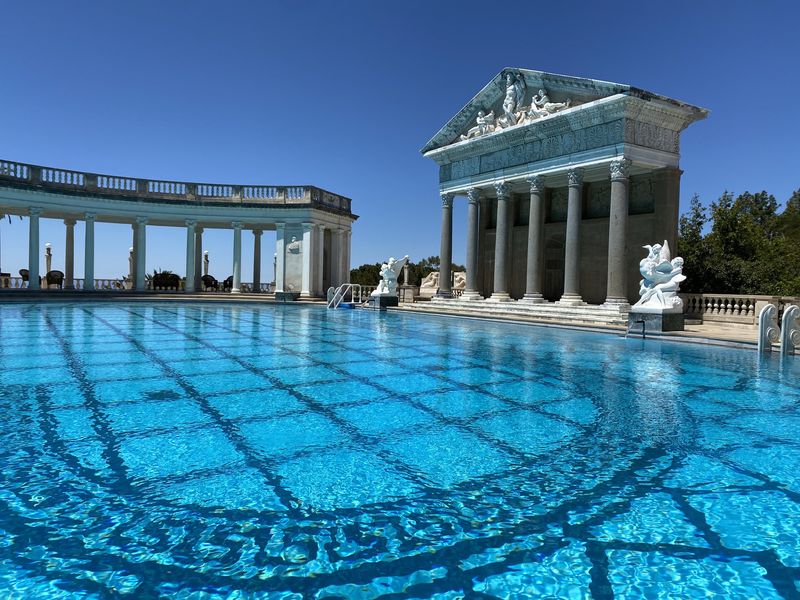
Crowning a California hilltop sits a Mediterranean fantasy of epic proportions. William Randolph Hearst’s “ranch” combined European architectural elements with his massive art collection in a uniquely American display of wealth.
Hearst Castle featured the world’s largest private zoo and swimming pools lined with real gold tiles. Construction continued for nearly 30 years without ever being fully completed, eventually incorporating 165 rooms and 127 acres of gardens.
8. Flagler Mansion (Whitehall): Palm Beach Pioneer’s Paradise

Gleaming white against the Florida sunshine, this Beaux-Arts beauty revolutionized American tourism. Standard Oil co-founder Henry Flagler built this 75-room marble palace as a wedding gift for his third wife.
Whitehall featured the latest technological marvels including a telephone system, central heating, and electricity. Flagler’s mansion helped transform Palm Beach from a remote outpost to America’s premier winter playground for the ultra-wealthy.
9. Kingscote: Gothic Cottage Of The Kings
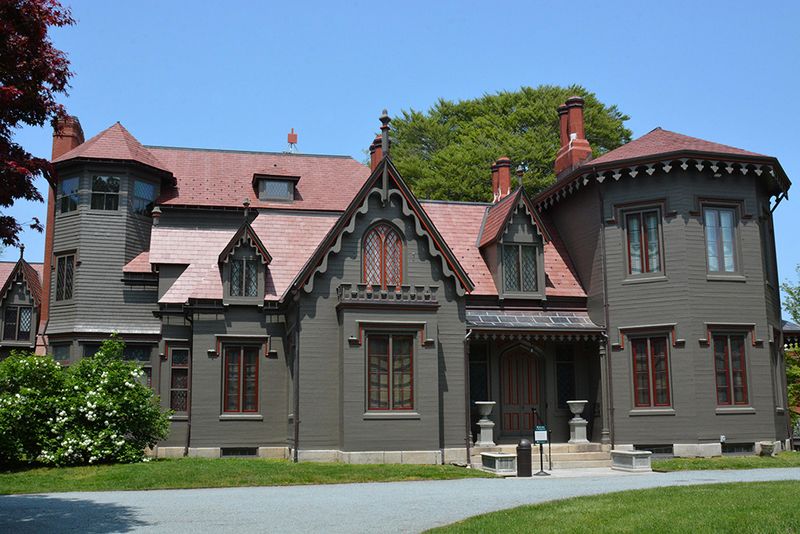
Tucked among Newport’s later mansions stands this charming early example of American Gothic Revival. The King family’s summer home pioneered the trend that would transform Newport into a playground for the wealthy.
Kingscote featured one of America’s first interior rooms designed by Louis Comfort Tiffany. Its dining room showcased innovative cork ceiling tiles, Japanese-inspired woodwork, and Tiffany’s earliest experiments with iridescent glass that would later make him famous.
10. Belcourt: Bizarre Bachelor Palace
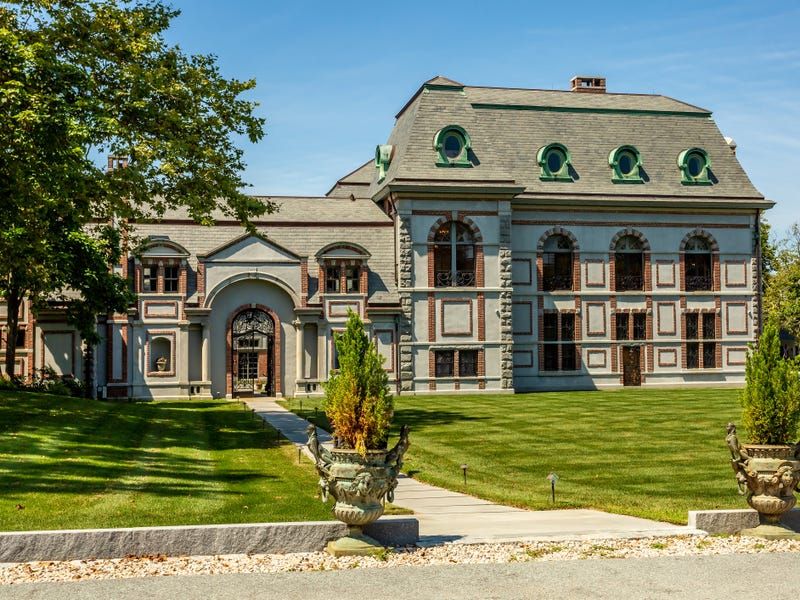
Standing in stark contrast to neighboring mansions, this eccentric creation combined a French hunting lodge with medieval fantasies. Oliver Hazard Perry Belmont built his summer home around his obsession with horses and bachelor lifestyle.
Belcourt’s ground floor originally housed stables for Belmont’s prized horses, with living quarters above. The mansion featured suits of armor, stained glass depicting medieval hunting scenes, and a banquet hall where Belmont entertained fellow wealthy bachelors.
11. Nemours: Du Pont’s French Formal Estate
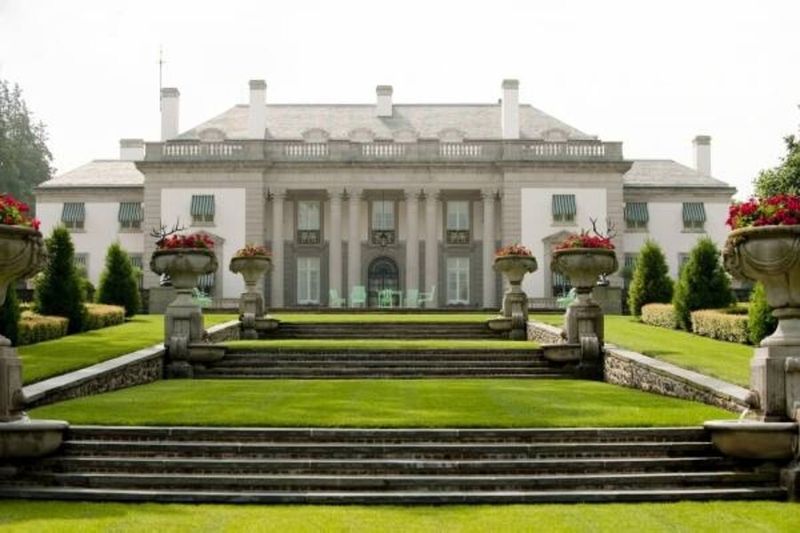
Sprawling across Delaware countryside spreads a formal garden paradise surrounding a Louis XVI-style château. Alfred I. du Pont created this 300-acre estate to win back his second wife after a family scandal.
Nemours featured the largest formal French gardens in America, modeled after Versailles. The mansion’s 102 rooms showcased mechanical marvels including an early elevator, vacuum cleaning system, and ice-making plant that produced 1,000 pounds of ice daily.
12. Vizcaya: Tropical Palace Of An Industrial King
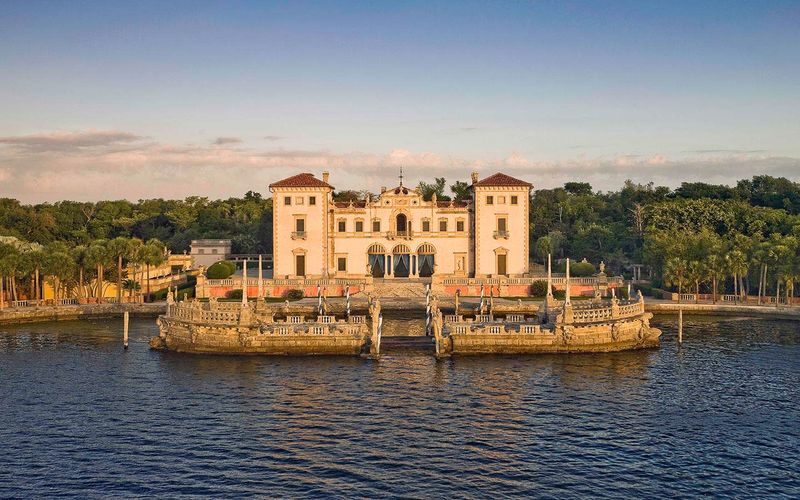
Rising from Miami’s mangrove swamps stands an Italian Renaissance vision transported to the tropics. Farm equipment magnate James Deering created this fantasy villa as his winter escape from Chicago’s harsh climate.
Vizcaya combined European grandeur with practical innovations to combat Florida’s humidity. The mansion featured hidden ceiling vents for early air conditioning and a central vacuum system. Deering imported 1,000-year-old Italian ceilings and entire European rooms to create instant history.
13. Oheka Castle: Otto Kahn’s Country Retreat

Crowning the highest point on Long Island sits a French-inspired château of massive proportions. Financier Otto Kahn built this 127-room estate as his country home and to showcase his art collection.
Oheka Castle required a staff of 126 to maintain its 443 acres and lavish interiors. The estate featured a golf course, greenhouses producing 100,000 flowers annually, and Long Island’s first residential elevator. Today it serves as a luxury hotel and popular wedding venue.
14. Boldt Castle: Monument To Tragic Love
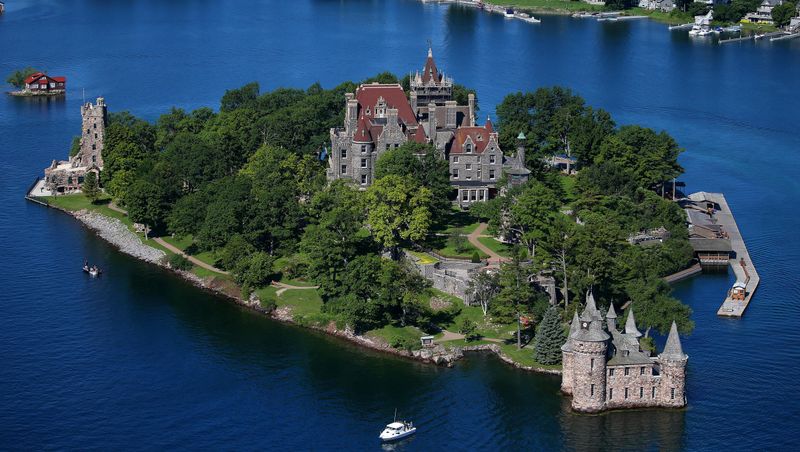
Rising from a private island in the St. Lawrence River stands a fairy-tale castle with a heartbreaking story. Hotel magnate George Boldt commissioned this 120-room Rhineland-inspired structure as a testament to his love for his wife Louise.
Construction on Boldt Castle halted abruptly when Louise died suddenly in 1904. The devastated Boldt never returned, leaving the unfinished castle to deteriorate for 73 years before restoration began, preserving this monument to Gilded Age romance.
15. Chateau-Sur-Mer: First of Newport’s Palaces

Predating Newport’s most famous mansions stands this Victorian landmark that set the standard for luxury. China trade merchant William Wetmore built this stone mansion decades before the Vanderbilts arrived in Newport.
Chateau-sur-Mer introduced indoor plumbing and central heating to Newport’s summer homes. The mansion’s Second Empire style, with its distinctive mansard roof, represented the height of fashion when completed in 1852 and underwent dramatic expansions as wealth expectations grew.
16. Kykuit: Rockefeller’s Hudson Valley Haven
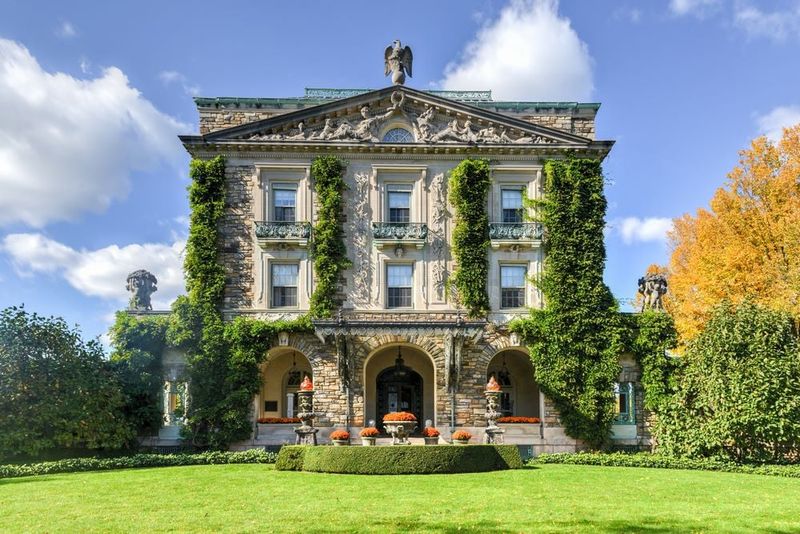
Overlooking the Hudson River valley sits a stately stone mansion built for America’s richest man. John D. Rockefeller’s family estate combined classical architecture with cutting-edge technology and extraordinary gardens.
Kykuit featured an underground art gallery displaying Nelson Rockefeller’s modern art collection. The six-story mansion included a special room for the founder’s hobby of golf practice, with nets arranged to catch balls hit indoors during winter months.
17. Lyndhurst: Gothic Revival Masterpiece

Perched above the Hudson River stands an architectural fantasy in stone. Railroad tycoon Jay Gould’s countryside estate broke from classical styles with its medieval-inspired turrets and asymmetrical design.
Lyndhurst’s interiors featured hand-carved woodwork and elaborate stained glass. The mansion’s brooding appearance made it perfect for filming Gothic stories – it appeared in the 1970s vampire soap opera “Dark Shadows” and several Hollywood movies.
18. Stan Hywet Hall: Rubber Baron’s Tudor Manor

Nestled among Ohio forests stands an English country house built with American industrial wealth. Goodyear Tire co-founder F.A. Seiberling created this 65-room Tudor Revival estate as his family home and entertainment showcase.
Stan Hywet Hall’s name comes from an Old English phrase meaning “stone quarry.” The mansion featured innovative rubber-based materials throughout, showcasing Seiberling’s products. Its gardens were designed by Warren Manning, a protégé of Frederick Law Olmsted.
19. Cairnwood: Pitcairn’s Gilded Sanctuary
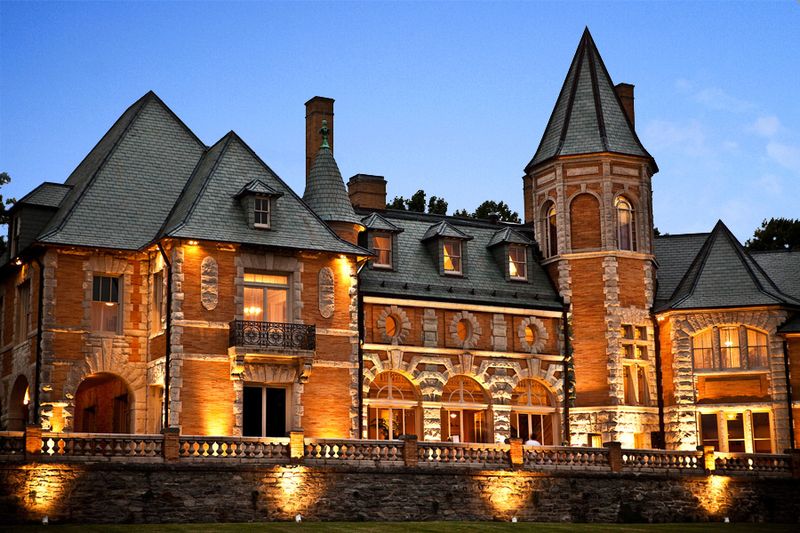
Tucked away in Pennsylvania countryside sits an elegant Beaux-Arts treasure with spiritual connections. Glass industry magnate John Pitcairn built this country estate near the headquarters of his religious community.
Cairnwood featured hand-carved woodwork from Pitcairn’s own forests. The mansion served as both family home and meeting place for the Swedenborgian Church that Pitcairn helped establish in America. Today it operates as a wedding venue and educational center.
20. Westbury House: Phipps Family’s Garden Paradise
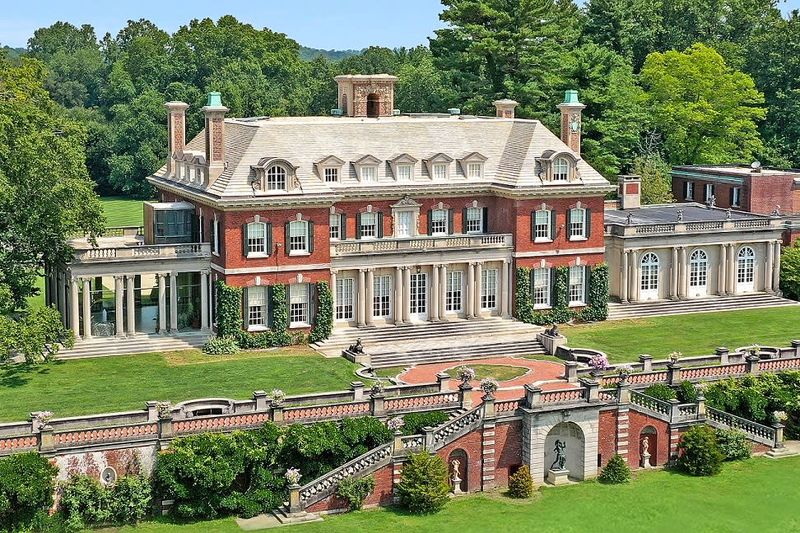
Surrounded by meticulously designed gardens stands a Charles II-style country mansion. Steel fortune heir Henry Phipps Jr. created this estate as a family home that would showcase his wife’s passion for horticulture.
Westbury House featured gardens inspired by great European estates, including a walled rose garden and boxwood parterre. The mansion’s interiors blended authentic English antiques with modern conveniences like central vacuum systems and early air conditioning.
21. Glessner House: Richardson’s Urban Masterpiece

Standing defiant amid Chicago’s Prairie Avenue mansions, this fortress-like structure broke architectural traditions. Farm equipment manufacturer John Glessner commissioned renowned architect H.H. Richardson to design a home unlike any other in the neighborhood.
Glessner House featured an innovative floor plan with rooms facing an interior courtyard rather than the street. The Romanesque Revival mansion’s radical design initially shocked neighbors but later influenced Frank Lloyd Wright and other pioneering American architects.
22. Pittock Mansion: Portland Pioneer’s Panoramic Estate

Perched high in the West Hills with sweeping views of Portland and Mount Hood sits a French Renaissance château. Newspaper tycoon Henry Pittock built this technological marvel as his retirement home after decades pioneering the Pacific Northwest.
Pittock Mansion featured an intercommunication system, elevator, and central vacuum cleaning. The house included a refrigerator room cooled by ice delivered daily up the steep hill. Construction finished just months before Pittock’s death in 1919.
23. Filoli: Gold Rush Fortune’s Country Estate
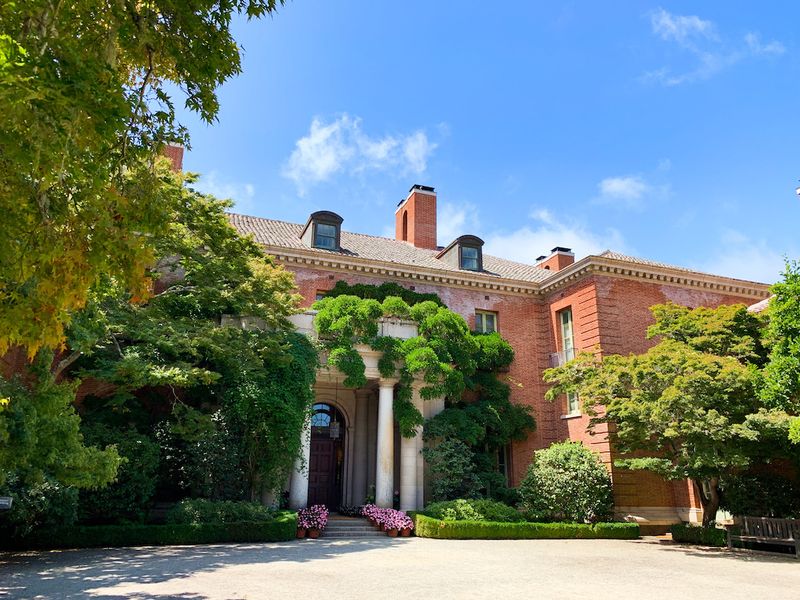
Nestled in California foothills stands a Georgian revival mansion surrounded by extraordinary gardens. Mining magnate William Bourn built this country estate as his family’s refuge following the devastating 1906 San Francisco earthquake.
Filoli’s name combines Bourn’s personal motto: “Fight, Love, Live.” The estate’s 16 acres of formal gardens represent one of the finest examples of early 20th-century landscape design in America. Its Georgian style contrasted with the Spanish Colonial Revival popular in California.
24. Moody Mansion: Texas Cotton King’s Victorian Gem
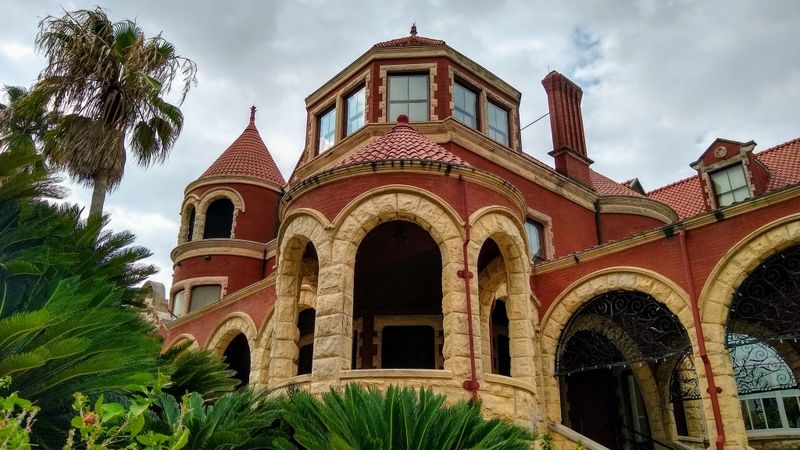
Rising above Galveston’s hurricane-ravaged landscape stands a Victorian survivor with remarkable history. Cotton broker William Moody purchased this mansion after it withstood the devastating 1900 hurricane that destroyed much of the island city.
Moody Mansion featured rare materials including mahogany, rosewood, and Siena marble. The 28,000-square-foot home contained 31 rooms filled with treasures from the family’s European travels. Four generations of Moodys lived here until it became a museum in 1986.
25. James J. Hill House: Railroad Empire’s Urban Castle
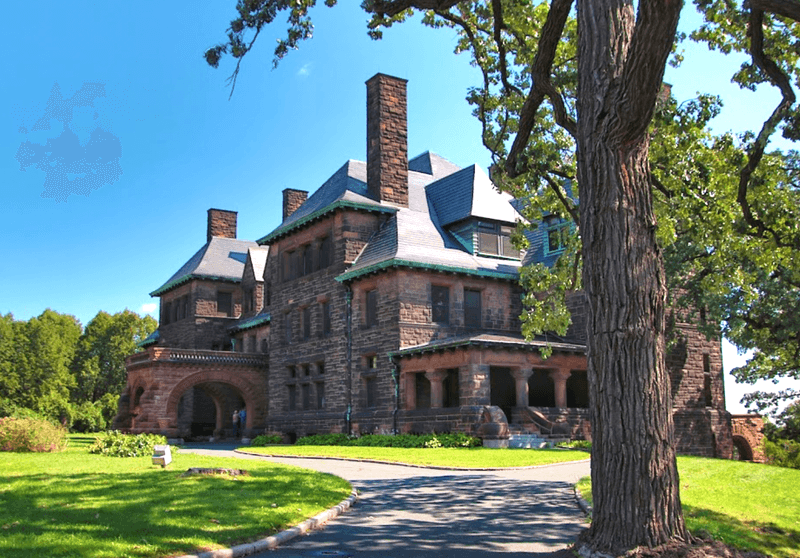
Dominating St. Paul’s prestigious Summit Avenue stands a massive Richardsonian Romanesque mansion. Railroad magnate James J. Hill, known as the “Empire Builder,” constructed this urban castle to showcase his vast wealth and influence.
The Hill House featured Minnesota’s first residential elevator and largest pipe organ. With 36,000 square feet and 22 fireplaces, it was the largest private residence in Minnesota. Hill personally oversaw construction, demanding the finest materials and craftsmanship throughout.

